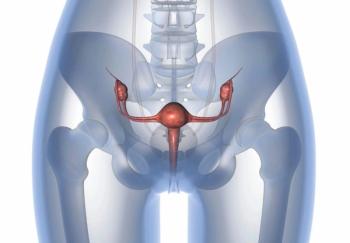
Response Depth in High-Risk Smoldering Multiple Myeloma May Predict Outcomes
Complete response rate strongly correlated with lower SLiM-CRAB incidence and biochemical progression in those with high-risk smoldering multiple myeloma.
Findings from the phase 2 I-PRISM trial (NCT02916771) evaluating ixazomib (Ninlaro), lenalidomide (Revlimid), and dexamethasone (IxaRD) in patients with high-risk smoldering multiple myeloma (HR-SMM) reveal that deeper responses to treatment may be predictive of better clinical outcomes, according to findings published in Nature Communications.
Efficacy results from the trial reveal that at a median follow-up of 50 months (range, 8-61) the primary end point of progression-free survival was not reached (NR; 95% CI, 57.7-NR). Additionally, of 53 evaluable patients, 52 (98%) remained progression-free without SLiM-CRAB criteria or death within 2 years of enrollment, with a single patient developing SLiM-CRAB progression after discontinuing therapy.
SLiM-CRAB criteria records end organ damage which is defined by increased calcium levels, renal insufficiency, anemia, and the presence of bones lesions; as well as defining biomarkers which is defined by proportion of clonal plasma cells in the bone marrow, free light chain ratio, and an MRI with more than 1 focal marrow lesion.
Additionally, 91% (95% CI, 80%-97%, P <.001) of patients remained biochemically progression-free, and the median biochemical PFS was 48.6 months (95% CI, 39.9-NR). Furthermore, the overall response rate (ORR) was 93%, with 31% having a complete response, 15% having a very good partial response, and 47% having a partial response.
“Optimal management of HR-SMM continues to evolve with novel approaches under investigation to deliver highly effective therapy to prevent end-organ damage and limit toxicity,” Omar Nadeem, MD, clinical director of the Center for Early Detection and Interception of Blood Cancers and assistant professor of Medicine at Harvard Medical School, wrote in the publication with study coinvestigators. “IxaRD demonstrated high response rates, and many patients experienced deep responses, with VGPR or better in nearly half of the patients treated. No patients developed [multiple myeloma] during study therapy, and the all-oral regimen was well-tolerated overall.”
A total of 55 patients with HR-SMM without evidence of SLiM-CRAB criteria were enrolled on the single-arm trial to receive IxaRd. Patients in this cohort were treated on an outpatient basis with 9 cycles of induction therapy followed by 15 cycles of maintenance therapy for a total of twenty-four 28-day cycles totaling 2 years. Induction therapy comprised of 4 mg oral ixazomib on days 1, 8, and 15 combined with 25 mg oral lenalidomide on days 1 through 21 and 40 mg oral dexamethasone on days 1, 8, 15, and 22. Maintenance therapy consisted of the same regimen without dexamethasone and a reduced lenalidomide dosage of 15 mg on days 1 to 21.
Among those enrolled, the median age was 64 years (range, 40-84), 55% of patients were male, and most were classified as White or Caucasian. Additionally, 84% of patients had an ECOG performance status of 0, 67% had IgG smoldering myeloma, and 53% were characterized as having evolving disease.
The trial’s primary end point was a 2-year PFS per SLiM-CRAB. Secondary end points included response rate, duration of response (DOR), PFS, safety, and MRD-negativity.
The median overall survival on trial was not reached. The median duration of response before biochemical progression was 47.4 months (95% CI, 37-NR), with a median time to biochemical progression of 49.9 months (95% CI, 39.9-NR).
The most common adverse events (AEs) observed on trial included leukopenia (80%), neutropenia (78%), fatigue (76%), maculopapular rash (69%), and diarrhea (67%). Common grade 3 or 4 adverse events included neutropenia (grade 3; 25%, grade 4; 4%), leukopenia (18%, 0%), hypophosphatemia (13%, 0%), and lymphopenia (11%, 4%). Dose modifications and delays occurred in 62% and 35% of patients.
Reference
Nadeem O, Aranha MP, Redd R, et al. Deeper response predicts better outcomes in high-risk-smoldering-myeloma: results of the I-PRISM phase II clinical trial. Nat Commun. 2025;16:358. doi:10.1038/s41467-024-55308-5
Newsletter
Stay up to date on recent advances in the multidisciplinary approach to cancer.



















































































